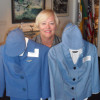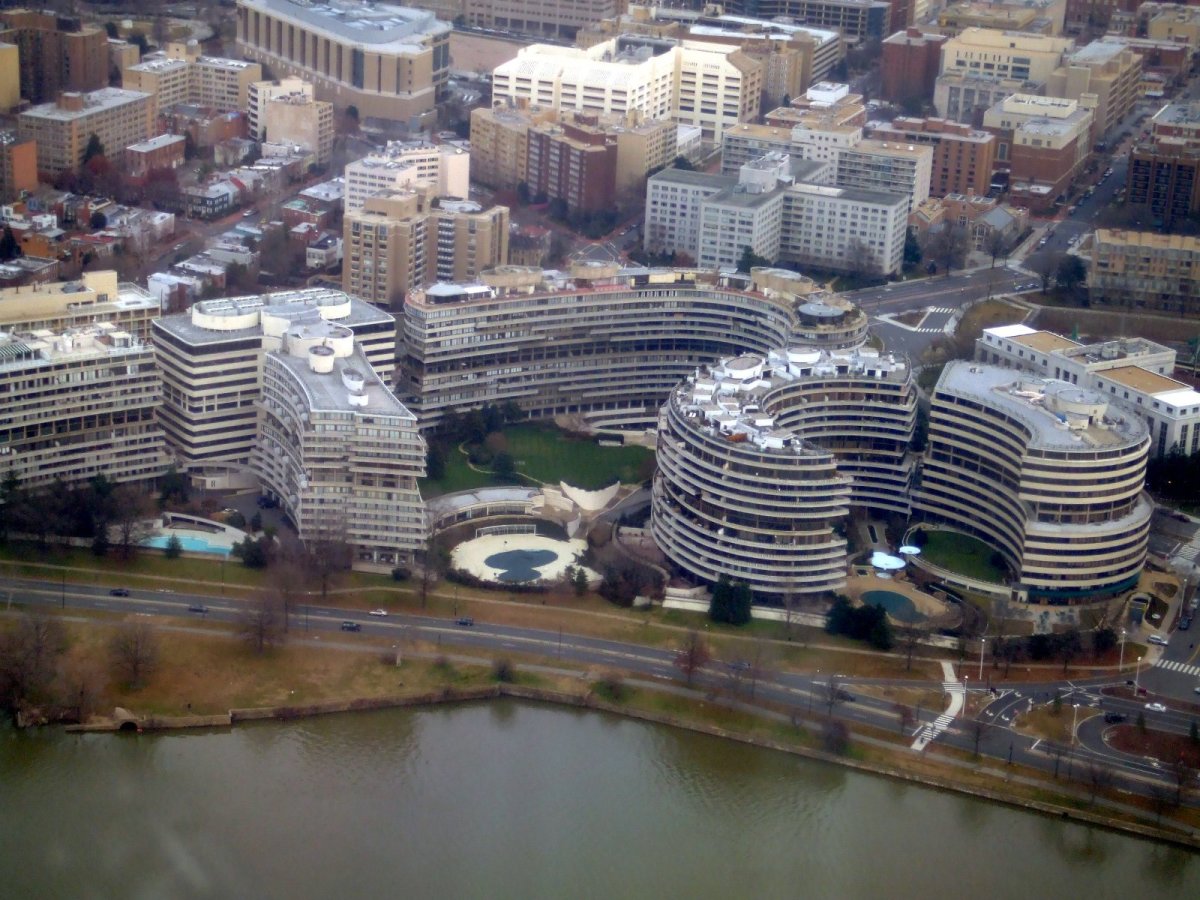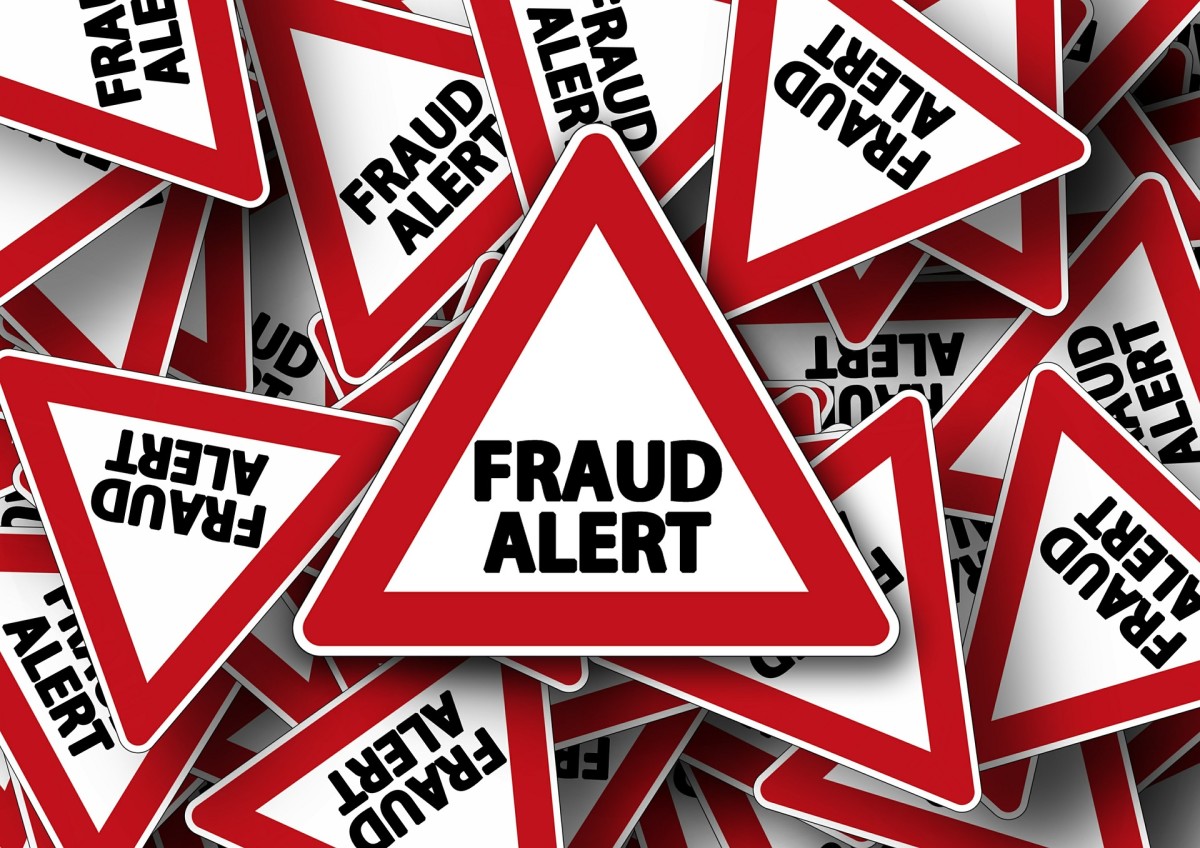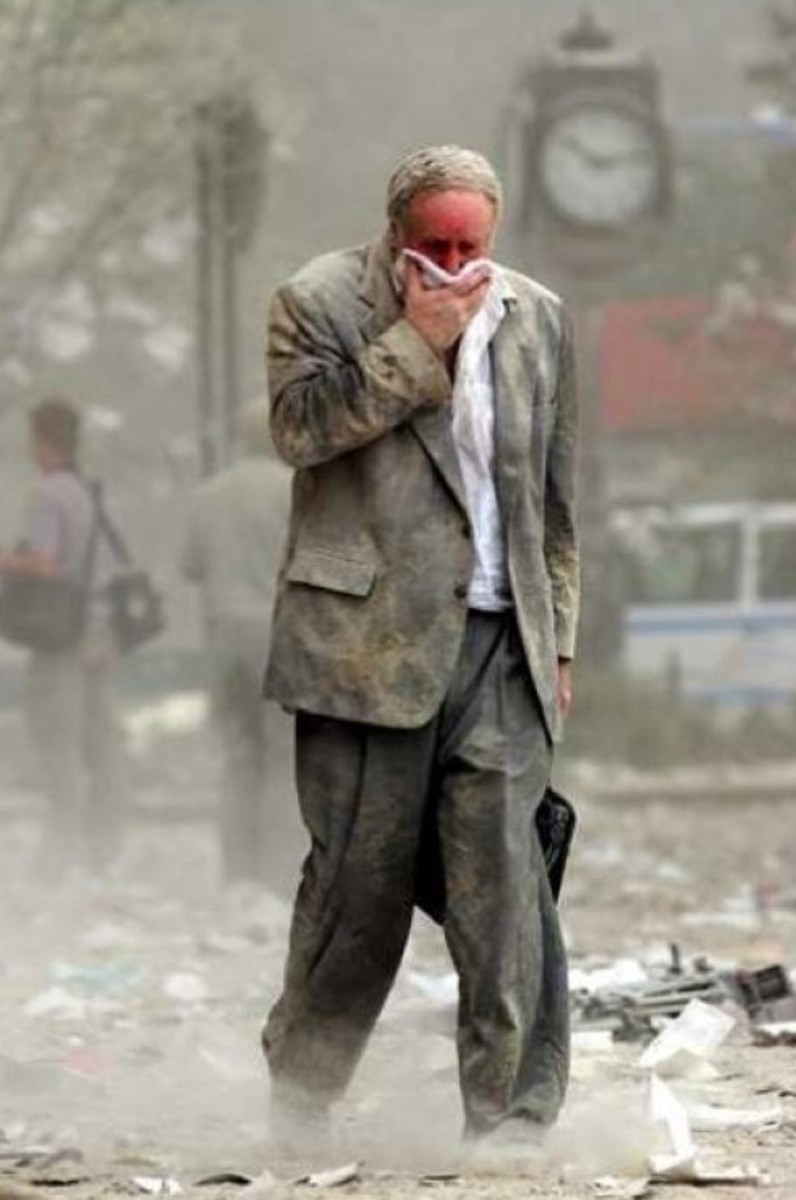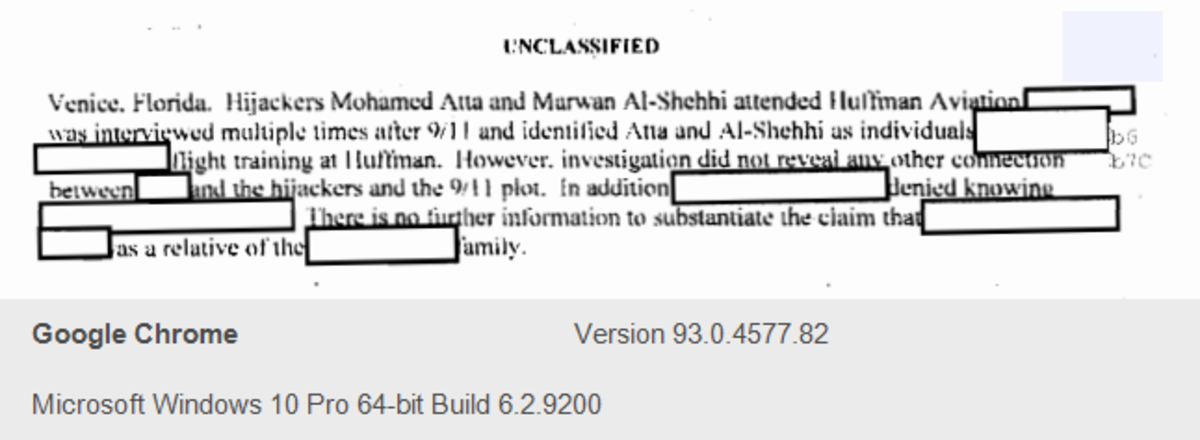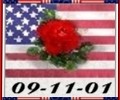The 9-11 Commission Hearings
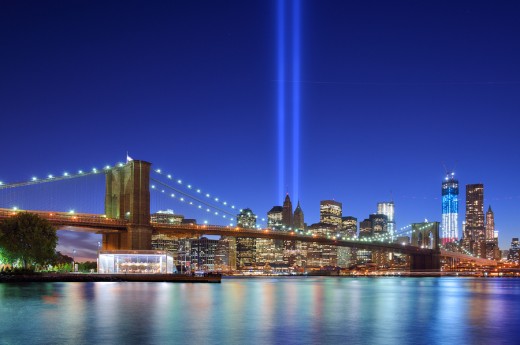
If you shut up truth and bury it under the ground, it will but grow and gather to itself such explosive power that the day it burst through, it will blow up everything in its way.
- Emile Zola, J’accuse
This article takes no political position, it simply states what has been documented in the 9-11 hearings and what has been shared with the public and what has not. What is quite clear, though, the 9-11 Commission was charged to “Provide the fullest possible account of the events surrounding the attacks on September 11, 2001”. But in the minds of many, it fell far short of this goal. I know this writer is still hungry for answers. The lack of full disclosure has created an informational vacuum which has nurtured conspiracy theories.
It is hard not to be stilted when finding out that the new 2001 Bush Administration placed fighting terrorism on a back burner and gave it no attention until after 9-11. It is also disappointing when one finds out that this same Administration did not want any hearings to learn more about the brutal attacks that took place on our nation that September morning in 2001. Why didn’t they feel the need to know? Was it because they didn’t want the American people to know the real truth for fear of national outrage? Or was it because they were guilty of not listening or acting on the intelligence from the FBI, CIA and others that was available in the summer of 2001 during the final stages of this very determined and well-planned attack. Whatever the reasons, they had to feel trapped and embarrassed that our high level organizations, so full of bureaucracy, failed us at gathering, interpreting and acting on available information – information that was shouting out “Look what we are going to do, you arrogant bastards. And we are going to do it in plain sight right under your noses.”
Is that why it took four newly widowed New Jersey housewives more than a year going back and forth between their homes and Washington meeting with members of Congress, with binders of documented information and signed petitions to finally get the 9-11 hearings approved. Not only did they travel those distances, they held rallies and talked with any journalists that would listen. Even more incredible, they did these things while being saturated with grief after losing their husbands in the World Trade Center walls, all the while living across the Hudson River able to see the empty, blackened and, stench-filled skyline where the World Trade Center towers had stood so proudly and so untouchable. It was not until November 27, 2002 that President Bush, under pressure, finally signed the documents calling for an investigation of the events leading to that fateful day. (Note 1)
These four widowed housewives: Kristen Breitweiser, Mindy Kleinberg, Patty Casazza, and Lorie Van Auken, were not only front line warriors for a heart-wrenching purpose, they were educated women who used their intelligence to break barriers down in the very fortified heart of Washington’s bureaucracy. It probably helped that Kristen Breitweiser had graduated from Seton Hall law school. But instead of going out into the work force, she chose to be a stay at home mom. Now she would be depending on her training to get a much needed – and wanted – set of hearings on the events of September 11th, 2001.
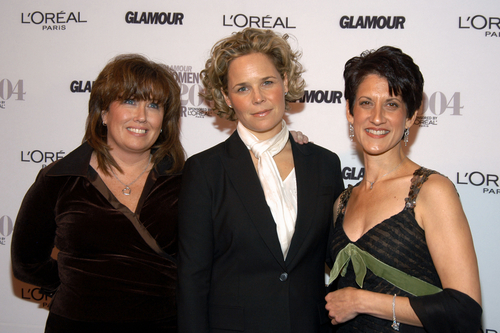
On September 18, 2002 Kristen Breitweiser went before a joint congressional inquiry speaking on behalf of thousands of 9-11 family members who had lost loved ones on September 11th. In a formal statement which lasted 27 minutes, she asked questions that showed great research and opened the doors for the approval of the 9-11 hearing. (This testimony is captured in a You Tube video that is well worth watching. Note 2)
Once the hearings were approved, Henry Kissinger the former Secretary of State and National Security Advisor to presidents Nixon and Ford, was picked to chair the commission on the 9-11 attacks. Former Senator George Mitchell a highly respected legislator from Maine, the Senate majority leader from 1989-1995, was selected to be the vice chair.
Once again the housewives and others had done their homework on both of these appointees. In a matter of two weeks after their appointments both stepped down in the face of questions about professional conflicts of interest. Kissinger was asked by Breitweiser if he had any Saudi Arabian clients and Van Auken asked him at the meeting in his Manhattan office if he had any clients named bin Laden. He reportedly spilled his coffee after that question. The Bush Administration argued that Kissinger did not have to release his list of clients but Congressional research indicated that he did. (Note 3) Among other things, Kissinger had been or still was advising Unocal, the oil company planning to build an oil pipeline through Afghanistan.
After Kissinger stepped down from the 9-11 commission, President Bush said, “His chairmanship would have provided insight and analysis of our enemies and the nature of the threats we face.” That might have been true because of his ties to Middle Eastern clients, but Bush also said, “My Administration will work quickly to select a new chairman”, which he did. Then he followed with , “The mission will be to uncover every detail and learn every lesson on September 11th, even as we act on what we have learned so far to better protect and defend America.” (Note 4) If that was true, why were there so many obstacles placed in the path of the 10 commissioners on the 9-11 panel? (Note 4)
Because everyone selected to sit on the commission were required by the Senate Ethics Panel to disclose their financial connections, former Senator George Mitchell chose to resign his position rather than disclose his law firm’s clients. It would seem that the Washington elite, of which both Kissinger and Mitchell were a part, had numerous ties to major oil companies which in turn had significant ties to the Middle East, particularly Saudi Arabia, because of our nation’s huge dependency on the oil from that region..
So the hearings were approved on November 27, 2002, and on December 10th and December 13th former Senator Mitchell and Henry Kissinger respectively vacated their positions on the 9-11 panel. Taking their places were Thomas Kean, former Governor of New Jersey and the current President of Drew University. The vice chair was former House Representative from Indiana, Lee Hamilton. Kean was a Republican, Hamilton, a Democrat. Even though Kean was a better replacement than Kissinger, he still had connections to Saudi oil by being a director and part owner of Amerada Hess, a company that maintained a partnership with Delta Oil of Saudi Arabia. The 10 members of the 9-11 Commission consisted of 5 Republicans and 5 Democrats. (Note 7)
The 9-11 Commission staff would be a collective group of nearly 80 people. Their professions ranged from a former state attorney general, to Federal prosecutors, to former members of previous Congressional investigations, and even a renowned Harvard history professor. These staffers were responsible for researching many topics a few of which were al Qaeda and the 9-11 attacks, intelligence oversight and resources, and international counterterrorism policy, and so on. But their work did not start right away because the next four months were spent getting top secret clearances for the staff, finding offices, locating second-hand furniture and setting up a phone system (which took over two months). (Note 8)
From the very beginning the word “limited” would be a great adjective describing the way the top White House politicians tried to control the process. The hearings were limited at every turn – from the money appropriated, to the time allowed, to the material the Commission would be allowed to examine, to how many commissioners were allowed to see the classified material. The White House also reserved approval rights over what the Commission would write. Most everything was classified and not accessible, from the tapes the FBI took from the Boston Control Tower to the video of American flight 77 crashing into the Pentagon.
Here are a few examples of the time and money limitations
- Initially $3 million was approved for the effort, which was not enough. The Commission asked for $11 million more. Even though the White House only wanted to give them $9 million, Congress sided with the Commission and gave them what they asked for. (Note 23) But compare that amount to the $30 million spend in the investigation of the Monica Lewinsky scandal during the Clinton Administration. The government also spent $175 million on the investigation of the Challenger incident in the mid 1980s. (With inflation this number would have been much higher.) (Note 5). It is quite clear that in Washington money talks, and the lack of appropriate funding says a mouthful about intent. Even the examination of the huge financial meltdown in 2008-2010 was given only $8 million to work with -- another statement of intent.
- Money was far from the only limitation placed on the Commission,, For example, they were given only 18 months to conduct their investigation, but it took Thomas Kean, the Commission Chairman, almost four months to be given a security clearance to read the pre-September 11th intelligence reports. So the first hearings were not until March 31, 2003, two weeks after Kean got his security clearance.-(Note 6) (Ironically, less than two weeks earlier the war on Iraq had already begun.)
- Only four people from the Commission were allowed to access the Presidential Daily Briefings (PDB) and this came only after months of negotiation to overcome White House opposition. Then, of the 300+ PDBs presented during the Clinton and Bush administrations, only limited amount were allowed to be reviewed.
- On March 14th, 2204, 15 months from the approval date for the hearings, the White House finally agreed to provide the Commission with a 17 page summary of the PDBs from the Clinton and Bush Administrations related to al Qaeda.
- The White House did not want Condoleezza Rice to testify under oath, but when the rationale for this position was discredited, she finally agreed to testify. But there were demands from the White House that no other White House officials would have to testify. (Her testimony is on You Tube. Note 21)
- After extensive negotiations, President Bush and Vice President Cheney agreed to testify, but not under oath and only in the Oval Office, and only with a limited number of commissioners present. Eventually they agreed that all 10 commissioners could attend.
- Even though Clinton gave the National Archives permission to turn over whatever they needed, the Bush Administration had final authority, so on April 1, 2004, only 25% of a reported 11,000 pages of information were released to the Commission. (Note 9)
It was also revealed that Sandy Berger, the National Security Advisor to President Clinton, had gone into the National Archives and taken out documents which he felt might incriminate the Clinton Administration. He felt some of the document might be used against Clinton and himself for not doing enough to prevent the 9-11 attacks. This was while he was acting as the designated representative to the 9-11 Commission for former President Clinton. On his fourth visit to the National Archives, he was caught taking documents and was confronted on October 4th 2003. Berger’s document removal was leaked to the press just a few days before the finished report of the 9/11 hearing on July 22, 2004. He was caught almost 9 months before, but when it was finally released this story took some of the spotlight and microscope off the actions of the Bush White House. After all it was an election year. Berger was fined $50,000 and given 100 hours of community service for this action. (Note 19)
And so it began – a search for the truth. In all, there were 12 public hearings of which 1, 2, 7, 8, 10, 11 and 12 were two-days long. The other 5 were just one day in length. Nine of the hearings were held in Washington D.C., two in New York, and one at Drew University in New Jersey, where Chairman Kean was the president. During all of these hearings, the four New Jersey widows were there, submitting questions to the Commission and expecting , or at least hoping, for answers that could at least give some closure to their empty, hurting hearts. Along with these four women were eight others who had loved ones die on that horrific day. These 12 individuals were referred to as the “Family Steering Committee” (FSC) (Note 11) They were on top of it! At each hearing, they submitted challenging questions for the Commission. The FSC was not alone. With them in the packed hearings rooms were hundreds of others who had lost loved ones on that fateful Tuesday morning.
Besides getting Kissinger and Mitchell to relinquish their leadership of the Commission, the New Jersey widows and the rest of the Family Steering Committee wanted Phillip Zelikow, the Executive Director of the Commission, to leave. His job title allowed him to decide what evidence the commission would see. He was the staff leader, and he would control the agenda. He was in reality the conductor of the staff symphony and the other staff members were the orchestra. The Steering Committee’s rationale was he had connections to the Bush Administration, especially Condoleezza Rice. In the late 1980s Rice and Zelikow worked closely on George H. W. Bush’s national security staff. In 1999, they wrote a book together, and he also served alongside of Rice as a member of the Bush II Transition Team in 2000. He also had attended White House meetings on terrorist threats and would have known the Administration’s viewpoints on threats. The Steering Committee felt it was quite evident that with his background, there would be a major conflict of interest. They wanted him removed, but the Commission did not grant their request. (Note 16)
The Family Steering Committee (FSC) had an idea who they wanted on this independent commission. According to Beverly Eckert of the FSC they were hoping for people who were not so connected to the Washington political arena. After all, this was supposed to be an independent commission. They had hoped for professors, writers, scholars, and those involved in the news world. Instead, they got a couple of former senators, two former members of the House of Representatives, a few former governors, and even a couple of Washington attorneys one of whom had served on the Watergate task force and the other a former deputy attorney general under President Clinton. (Note 17) As the hearings continued into October 2003, former Georgia Senator Max Cleland (a Democrat) became more and more agitated by the lack of available information for their inquiry. His verbal attacks against the Administration were becoming more piercing to White House officials. They felt he needed to relinquish his spot on the Commission, especially after saying loud and clear, “We learned this government knew a whole lot more about these terrorists before September 11, than it has ever admitted. Let’s chase the rabbit into the ground. They had a plan to go to war, and when 9-11 happened, that’s what they did. They went to war.” When Cleland left the Commission in November of 2003, he said, “Bush is scamming America.” (Note 13) On November 21, 2003, President Bush nominated Cleland for a position as a board director of the Import-Export Bank of the U.S. Cleland left and started his new position the following month. (Note 15). He was replaced on the Commission by former Senator Bob Kerrey of Nebraska. But even after his new appointment, Cleland continued to speak out about the hearings.
As Max Cleland was exiting the 9/11 Commission, the Family Steering Committee was also frustrated with the type of wordy answers being given in the hearings -- filled with rhetoric rather than facts. For example, a typical response might be, “That is a very good question but let me get back to such and such first”. This group of individuals who were so instrumental in finally getting the hearings approved were there mainly to find out what really went wrong and get some kind of closure. But as they continued on their quest, they discovered that the answers were often hidden in classified and unreleased material. The really good stuff was in the hands of the FBI, the CIA, and the White House and for various reasons was unavailable.
Mindy Kleinberg, one of the original four Jersey wives, reached out to a group of family members who had lost loved ones in the Pan American Flight 103 which exploded over Lockerbie, Scotland in 1988. As these groups worked together, Kleinberg learned from the Lockerbie group that the airlines needed stronger cockpit doors, and they had demanded there be a change. However, new doors cost money and as a result that did not happen. This is a very strong point, because stronger doors may well have deterred cockpit entry on 9-11.
Another member of the FSC, Beverly Eckert, whose husband died in the South Tower on the 98th floor, was not only involved in the 9-11 hearings, but was also the co-founder of a group called Voices of September 11th. This group is still very large and has strong support. She was one of only a handful of relatives who rejected any settlement offered by the government, because if she did, she would have had to renounce any legal claims against U.S. persons or entities such as corporations or government. Her passion was preventing another attack, and she was interested in learning all she could. Beverly was given the “Building Bridges Award” by President Obama in early 2009. Unfortunately on February 12th of that year she was killed while traveling to Buffalo , New York to give out a scholarship in her husband’s name. She along with 48 others were killed when Colgain Flight 3407 crashed while descending due to ice on the wings. (Note 18)
Continuing to learn more about the Family Steering Committee, I found it incredible how determined this group of men and women were in their persistence to not only get the hearings approved but then to monitor the progress and ensure the Commission stayed on point for a broad, in-depth investigation. They were resilient particularly in light of all the obstacles and powerful opponents they encountered. The year the report was released was an election year, and those guarding the White House and wanting another four years with George W. Bush were like warriors making sure any damaging information which might affect his reelection would not make it out into the world of the voting public. So Bush’s statement that “The mission will be to uncover every detail and learn every lesson on September 11th” was compromised by his political guards. At the top of this structure was his Vice President Dick Cheney, one of the powerful men from his father’s 1988-1992 Administration. .The chain of command went from Cheney to Carl Rove, White House Advisor, then to Alberto Gonzales, White House Counsel. Gonzales was the one who interacted with the Commission and verbally denied access to the documents requested by the Commission in June 2003. (Note 20)
As the battle of what the political guards would make available to the “wanting” commission, Zelikow and Gonzales had heated exchanges over the presidential daily briefings, so much so that Gonzales told Chairman Kean he did not want to meet with Zelikow, and he would only deal with Kean and Vice Chair Hamilton. This argument dated back to January 2003, and the stonewalling continued into November 2003. The final terms were only four within the Commission could look at 20% of the PDBs ,and those briefings were to be chosen by Gonzales. They would also be pre-cleared with Vice President Cheney and David Addington, another White House Counsel. The White House finally relented when this delay made the papers. Eventually a deal was made to allow Zelikow and Commissioner Jamie Gorelick to view 300 plus of the PDB, of which 50 were then deemed pertinent to 9-11. Kean and Hamilton were allowed to read those 50 PDBs but the rest of the commissioners were not. (Note 22) But there was a price to pay for the PDB deal, and the Commission agreed to not use subpoenas for the PDB documents. Gonzales explained that if he gave them the PDB documents, Congress would want to see them because Congress had appointed all of the Commissioners except Kean and Hamilton. Gonzales was protecting the documents under the doctrine of “Executive Privilege (EP).” Yes, needed information for the Commission was hiding behind EP. There needed to be a vote of the Commission to accept this deal. The 10 voted 6-4 in favor of accepting the deal. Hamilton voted with the Republicans to create the majority.
After this deal was made, the FSC released a statement saying. “A limited number of Commissioners will be restricted access to a limited number of PDB documents.” And the FSC was unhappy Zelikow was one of the two initial reviewers because of his connection with the White House, particularly Condoleezza Rice. The FSC further said, “The Commission has seriously compromised to conduct an independent, full, and unfettered investigation.” (Note 22)
The final report was published on July 22, 2004, and it had 571 pages. The 12 hearings began the last day of March in 2003 and ended on June 17, 2004. Over 12,000 people were interview from 10 different countries and over 2.5 million documents were reviewed. After that the report was screened for any classified information and then edited. A few of the key conclusions were:
- The attacks were a shock, but they should not have been that much of a total surprise.
- Our nation’s intelligence community had plenty of red lights flashing, particularly during the summer of 2001.
- There were failings of numerous government agencies mainly the CIA, the FBI, the Pentagon, and the National Security Council. (Note: 24)
Kean and Hamilton were proud of what they were able to accomplish under the restrictions of classified documents, of time and money, and the misinformation they received from the Pentagon and the FAA. The two leaders felt that their Commission and their staff did a great job under the circumstances. (Note 24) They also acknowledged the incredible work of the Family Steering Committee which kept them on task and kept the questions coming. In August 2006, Kean and Hamilton wrote a book entitled, Without Precedent: The Inside Story of the 9/11 Commission. Professor Ernest May, a Harvard historian, a member of the Commission staff, wrote in his article, “When Government Writes History: A Memoir of the 9/11 Commission,” “The overall success of the Commission was the result of many factors, one of which was the insistent, emotional, but hardheaded lobbying of the families which was critical” He also stated in this article that the Commission intentionally balanced the weaknesses of both the Clinton and Bush administrations in their report. After all this was a bipartisan group, and they worked to achieve consensus rather than split along party lines
However, the Family Steering Committee felt that only 30% of the questions they wanted answers to were actually answered. Because of that, many of them have continued their quest for additional information. One of them is New Jersey widow Laurie Van Auken, who through the years has continued her search for answers. She is not alone, there are several “truth” movement groups dealing with 9/11. Two of these are Architects and Engineers for 9/11 Truth and Scholars for 9/11 Truth and Justice. One of the focuses of these groups is the way WTC towers fell and how Building 7, a block away from the towers, collapsed later that evening. (Note 25)
Even though many questions were not answered in the hearings, the New York Times wrote that the 9/11 Commission Report was a “masterpiece,” and it was nominated for a national book award. (Note 26)
There are a multitude of books written about September 11, 2001 but one of the key points in Richard Clarke’s book, Against All Enemies, is that after Condi Rice put him in charge of emergency response on 9-11, the very next day in the Situation Room, the political leaders were talking about Iraq, not al Qaeda. In his Book, Bush at War, Bob Woodward said that on the day of the attacks, Secretary of Defense Donald Rumsfeld in hand written notes wrote, “… put it all together, tie it all together” It seemed there was a group of powerful individuals in key positions whose tenure dated back to the administration of George H.W. Bush, which felt that it had been a mistake not to have removed Saddam Hussein from power during the first Gulf War. With his son now president, this group resurfaced their plan which dated back to 1992 to take out Hussein. Their goal was Iraq. Even after the attack, the threat was seen as Iraq not al Qaeda. Considering this, it seems clearer why the 9-11 hearings had so many obstacles. (Note 14) Also clear was the fact that President Bush was being surrounded by many powerful and very determined individuals whose main focus was getting the U.S. back into IRAQ.
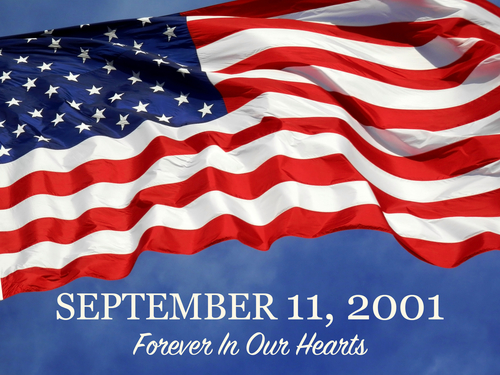
Notes:
- http://en.wikipedia.org/wiki/Jersey_Girls
- https://www.youtube.com/watch?v=mLF65PTvHOo
- http://www.historycommons.org/context.jsp?item=a121602Keanreplaces.
- http://www.newyorktimes.com/2002/12/13/politics/13cnd_Kiss.html. (Article by David Firestone, Dec 13,2002)
- http://georgewashington2.blogspot.com/2010/05/columbia-space-shuttle-investigation.html
- Ernest May article
- http://goveinfo.library.unt.edu/911/about/faq.htm
- http://wikispooks.com/wiki/9-11/Commission
- http:///www.americanprogress.org/issues/security/news/2004/04/07/715/911-commission-opposition-and-obfuscation/
- https://en.wikipedia.org/wiki/Criticism_of_the_9/11_Commission
- http://govinfo.library.unt.edu/911/hearings/index.htm
- http://www.visibility911.org/archived-statements-of-the-911-family-steering-committee/
- http://www.911truth.org/911-commission-official-coverup-guide/
- http://www.democracynow.org/2004/3/23/the_white_house_has_played_cover
- http://www.exim.gov/news/former-senator-max-cleland-joins-ex-im-bank-board-directors-espa%C3%Blol
- http://www.911truth.org/rice-zelikow-connection-kean-commission-conflicts-of-interest/
- http://en.wikipedia.org/wiki/9/11_commission.
- http://www.911truth.org/beverly-eckert/
- http://www.historycommons.org/entity.jsp?entity=sandy_berger
21. http://www.youtube.com/watch?v=H3BIKOqoHIV
22. http://www.historycommons.org/context.jsp?item=a110703pdbdeal
23. Kean, Thomas, and Lee Hamilton. Without Precedent: The Inside Story of the 9/11 Commission. Chapter 2, A Start-up, Alfred Knopf, New York, 2006
24. http://www.history.com/topics/9-11-commission
25. http://en.wikipedia.org/wiki/911Truth_movement
26. http://newrepublic.com/article/64332/when-government-writes-history.
